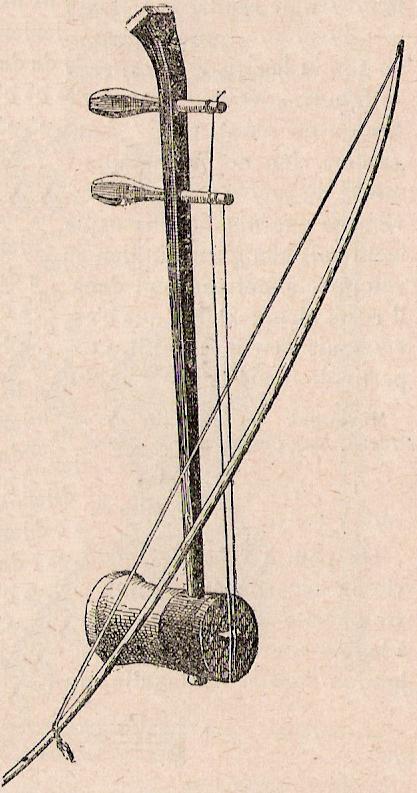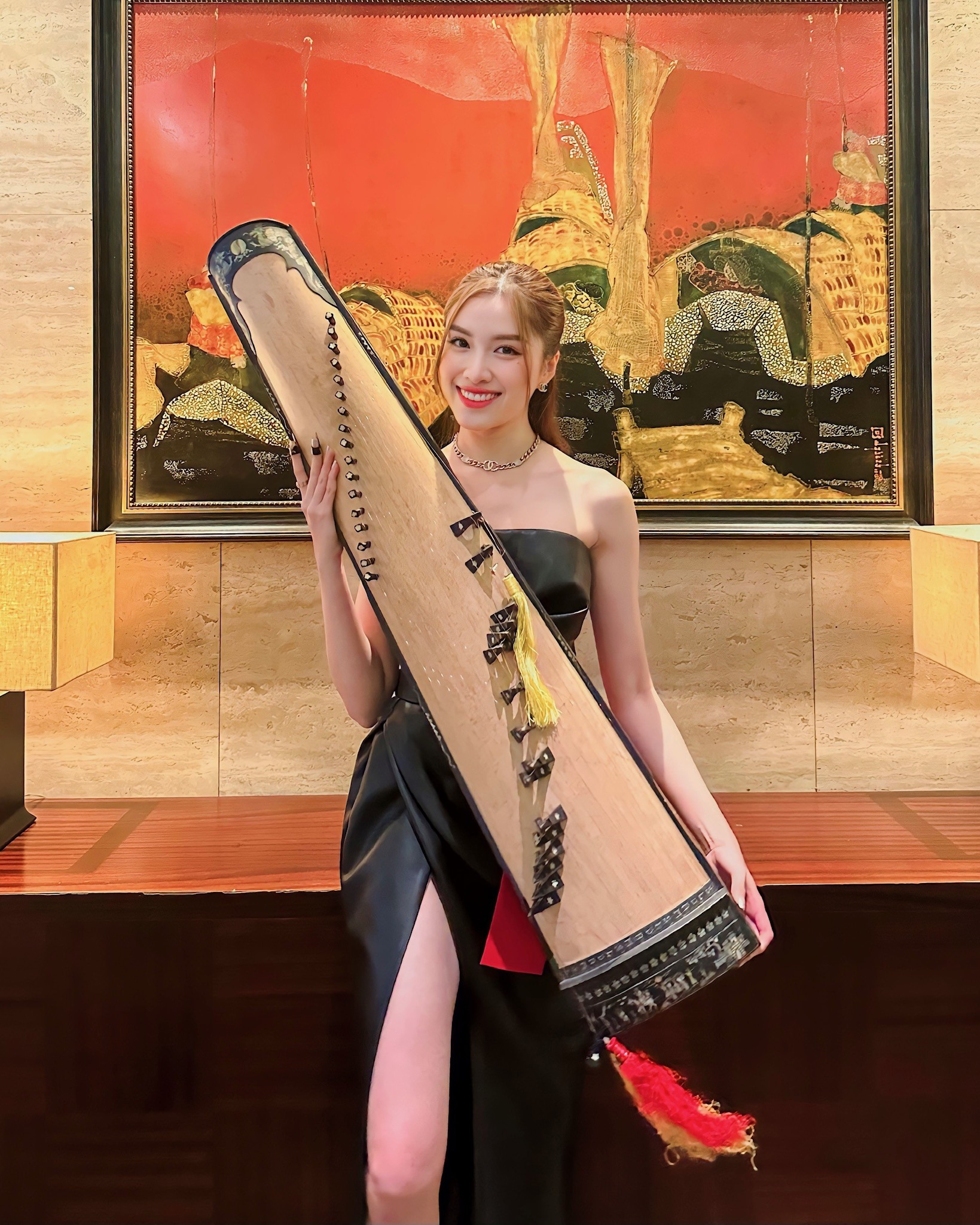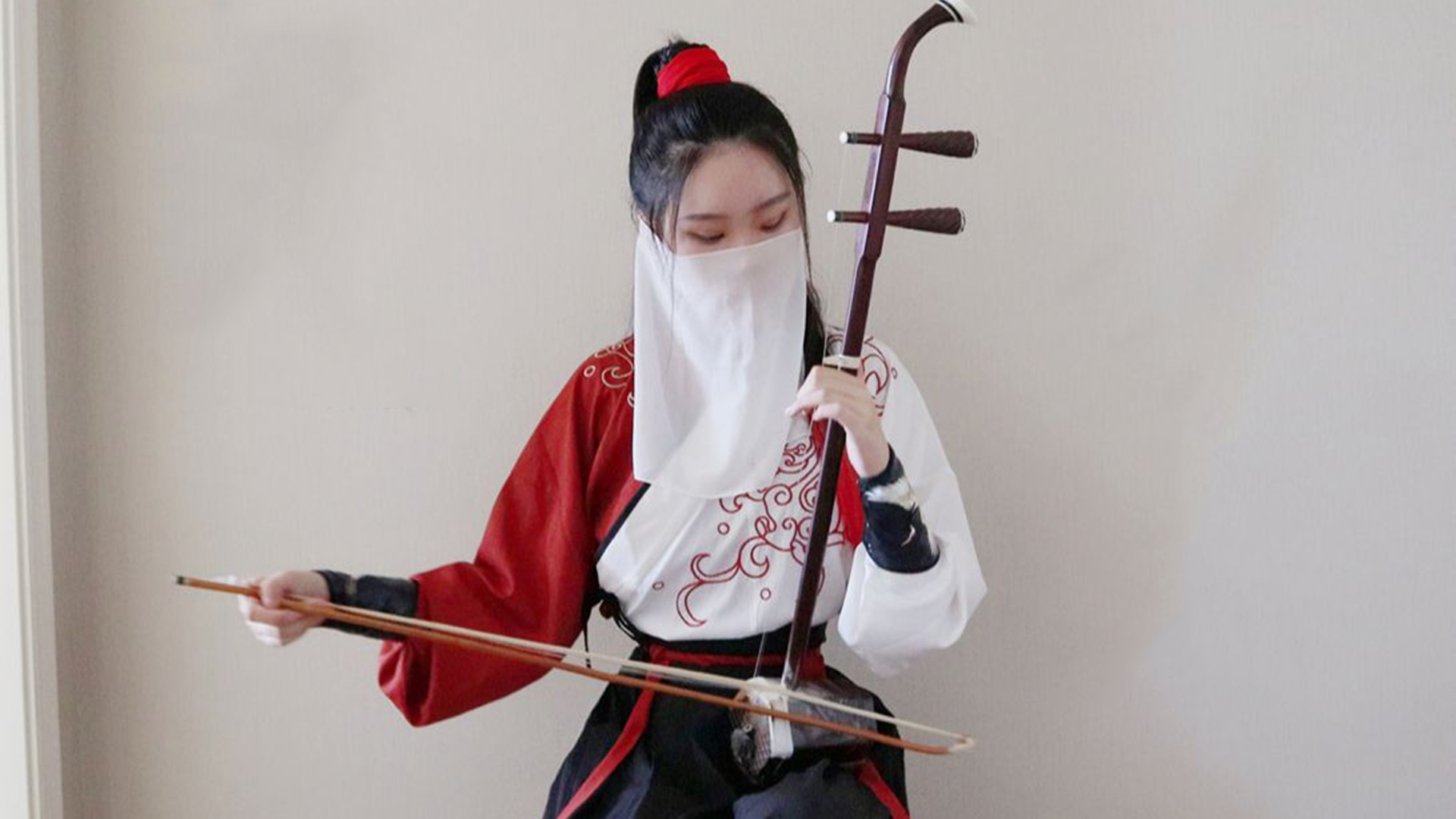Traditional Vietnamese musical instruments are the musical instruments used in the traditional and classical musics of Vietnam. They comprise a wide range of string, wind, and percussion instruments, used by both the Viet (Kinh) majority as well as the nation’s ethnic minorities.
1. Đàn Bầu
The đàn bầu (Vietnamese: [ɗàːn.ɓə̀w]; “gourd zither”), also called độc huyền cầm (“one-string zither”; the name is only used by the Jing ethnicity in China) is a Vietnamese stringed instrument, in the form of a monochord (one-string) zither.
While the earliest written records of the đàn bầu date its origin to 1770, scholars estimate its age to be up to one thousand years older than that.
The đàn bầu, played solo, is central to Vietnamese folk music, a genre still popular today in the country. Its other traditional application is as an accompaniment to poetry readings. With the invention of the magnetic pickup, the usage of the đàn bầu spread to ensembles and also to contemporary Asian pop and rock music. Now, electronics designed for the electric guitar are sometimes employed with the đàn bầu to further expand its tonal palette.

2. Đàn Gáo
The đàn gáo (“coconut shell fiddle”) is a bowed string instrument, a part of the traditional Vietnamese orchestra. It is similar to the đàn hồ. The instrument originated from South Viet Nam, and is used in entertainment contexts. It can be played alone, as part of an orchestra, or to accompany cải lương (Vietnamese folk opera). The instrument’s name can be broken down as “đàn” meaning string instrument, and “gáo” literally translated as an aged coconut shell used as a scooper. The đàn gáo is most closely related to the fiddle in Anglo-American culture, and the yehu and banhu in Chinese culture.
3. Đàn nguyệt
The đàn nguyệt (Vietnamese pronunciation: [ɗǎn ŋwiə̂ˀt], “moon lute”) also called nguyệt cầm, is a two-stringed Vietnamese traditional musical instrument. It is used in both folk and classical music, and remains popular throughout Vietnam. It may be descended from the Ruan (Chinese: 阮; pinyin: ruǎn), a Chinese instrument.
The đàn nguyệt’s strings, formerly made of twisted silk, are today generally made of nylon or fishing line. They are kept at a fairly low tension in comparison to the guitar and other European plucked instruments. This, and the instrument’s raised frets, allow for the bending tones which are so important to the proper interpretation of Vietnamese traditional music. Such bending tones are produced by pressing the string toward the neck rather than bending to the side. The strings are generally plucked with a small plectrum; often a plastic guitar pick is used.

4. Đàn nhị
The đàn nhị (Vietnamese: [ɗâːn ɲîˀ]), also called đàn cò, is a Vietnamese bowed string instrument with two strings. The word nhị means “two” in Vietnamese, and đàn means “instrument”. Its sound box is generally covered on one end with snakeskin.
There is some variation in construction between different forms of the đàn nhị. Instruments colloquially referred to as đàn cò are often more similar to the Chinese Erxian Khmer tro and Thai saw duang, while instruments referred to as đàn nhị are often constructed more similarly to the modern erhu of China.
It is related to the huqin family of instruments of China. Some Austroasiatic groups in Vietnam also have their version of the đàn cò. The Mường have the cò kè, the Chứt have the t’rơbon, the Khua have the karong, and the Khmer have the tro.

5. Đàn tranh
The đàn tranh (Vietnamese: [ɗâːn ʈajŋ̟], 彈箏) or đàn thập lục is a plucked zither of Vietnam, based to the Chinese guzheng. The same root is also Japanese koto, the Korean gayageum and ajaeng, the Mongolian yatga, the Sundanese kacapi and the Kazakh jetigen. It has a long soundbox with the steel strings, movable bridges and tuning pegs positioned on its top.
The đàn tranh can be used either as a solo instrument, as part of various instrumental ensembles or to accompany vocal performances.
The Vietnamese ‘s đàn tranh came from the Chinese Chaozhou zheng. In the late 13th and early 14th centuries, the đàn tranh had 14 strings. Between the late 15th and the 18th centuries, the number of strings of the đàn tranh increased to fifteen and the instrument was called thập ngũ huyền cầm. In the 19th centuries, the đàn tranh with 16 strings appeared and had become the standard version until the late 1970s and early 1980s.
The Vietnamese dan tranh, the Japanese koto and the Korean gayageum, are descended from Chinese guzheng.

6. Đàn tỳ bà
The đàn tỳ bà (Vietnamese: [ɗàːn tì ɓàː], 彈琵琶) is a Vietnamese traditional plucked string instrument derived form the Chinese pipa, that first gained popularity in China before spreading throughout East Asia, eventually reaching Vietnam sometime during the Trần dynasty.
It is made of wood, with a pear shape and four strings made of nylon (formerly twisted silk). The instrument is held in a near-vertical position when playing and its playing technique involves frequent bending of the tones with the fingers of the left hand. The strings are plucked with a small plectrum similar to a guitar’s but larger. It was associated with the royal court and is still used in the ensemble that performs at the Imperial Palace at Huế.
The instrument’s name is a Vietnamization of the name of the Chinese pear-shaped lute, called pipa, from which the đàn tỳ bà is derived. “Đàn” is the Vietnamese prefix meaning “stringed instruments”, which is part of the name of most traditional stringed instruments of the Viet majority. During the Ly–Tran dynasties (possibly to the Later Le dynasty), the đàn tỳ bà had a similar shape to the Japanese biwa, but no longer used now. Instead, from the Nguyen dynasty to the present day, the đàn tỳ bà was influenced by the pipa from the Ming dynasty and Qing dynasty of China, but it was also improved to fit Vietnamese culture.

